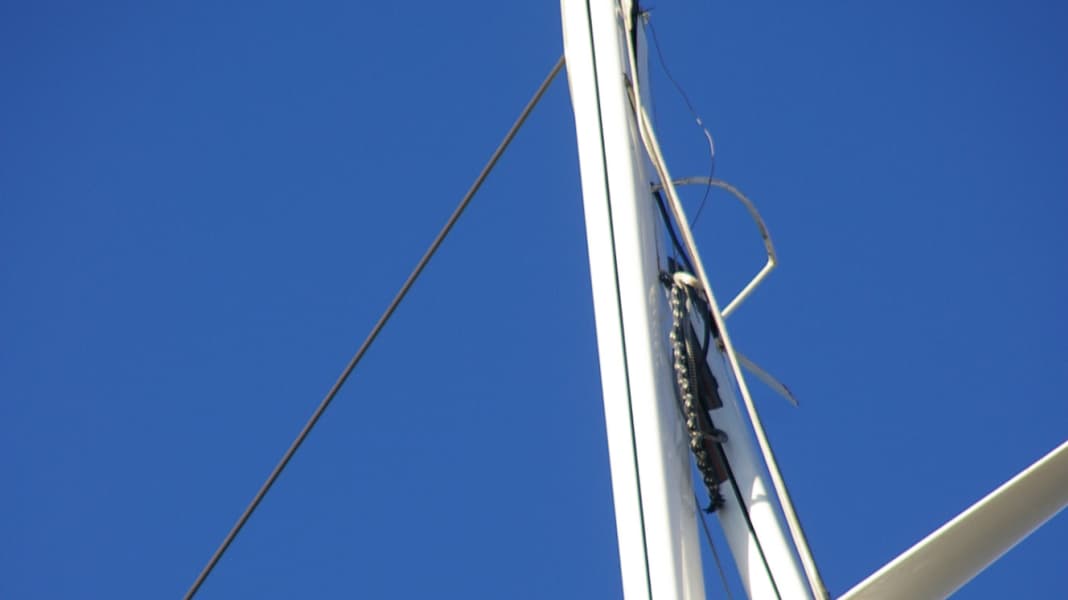
In a loose series, we therefore address the most frequently asked questions - and misunderstandings - about yacht insurance. In the first instalment, with the help of Dirk Hilcken from the boat insurance broker Pantaenius yacht insurance the fundamental Sense and purpose of a liability and comprehensive policy for the ship.
The second episode was all about the question, how high a ship should be secured. Especially if you buy a second-hand boat. Episode three dealt with the question, whether and to what extent older yachts should be insured. And in episode four we clarified, what the so-called personal effects are all about.
We clarified this in the last episode, whether broken sails or even masts are covered by YACHT hull insurance are - a topic that concerns many boat owners. That's why we're going one step further today and shedding light on the question of what condition the rig must generally be in or be kept in when the insurance is taken out and also during the term of the policy.
Dirk Hilcken explains:
How old can a rig be when I take out insurance and do I have to replace it every ten or 15 years to keep it insured? We are often asked this question.
Let's start with a basic note: our rigs are wearing material, whether we like it or not. Even in the harbour, they are constantly exposed to changing wind loads. And they are also exposed to salt water and UV radiation. If the boat is stored with the mast upright, the rig doesn't even have a winter break. To think about it: would you set off on a long holiday trip with long-worn tyres?
Now for the answer: If someone wants to insure a used boat that is more than 15 years old with Pantaenius, we ask about the age and condition of the rig. If it is older than 15 years, we require a current check by a rigger or sailmaker, or at least by a specialised company. Professionals recommend replacing the standing rigging of a wire rope rig after 15 years or 20,000 nautical miles at the latest. The interval is significantly shorter for rod or synthetic rigging.
What new customers should look out for
If the boat is older than 25 years and the rig is still original, we require the standing rigging to be replaced. In both cases, we can still insure the boat, but damage to the rigging is excluded until the check or replacement. We are open to this.
However, such exclusions can also affect a policyholder unexpectedly. It may be that other insurance companies do not ask about the age of the rig. In such a case, however, a policyholder should check very carefully whether the conditions specify exclusions such as "defective maintenance" and "failure to carry out repair work" and whether consequential damage caused by structural defects, wear and tear, etc. is also insured. In the event of a claim, this could be used to justify a rejection. In this case, the customer may have been too happy that he was not asked about the age of the rig when he took out the insurance.
There are no such surprises with Pantaenius. There are also no complicated, incomprehensible exclusions as "stumbling blocks". According to our terms and conditions, consequential damage caused by material defects and wear and tear is also insured. This means, for example: If a bolt or split pin fails and the pole breaks as a result, the bolt and split pin are not insured, but the pole is.
No control for existing customers
We do not check the maintenance of existing customers' rigs. We trust that they are travelling with a regularly maintained rig for their own safety. In general, you should have your rig professionally checked at least every five years when it is lying flat and unloaded. This includes, for example, dismantling the furling system to inspect the forestay.
More about boat insurance:
- Burglary, collision, accident: Checklist for the correct procedure
- What to do in the event of damage? Prevention, mitigation, settlement
- The right policy for everyone: 7 sailor types at a glance
- Attention, trap! How to read the small print
- Legal advice: The most important answers in the interview
- Contract types: What policies are available
If you have the rig serviced, keep the receipts. This will enable you to prove the condition of the boat when you sell it. And you'll make life easier for your successor when he or she is looking for new insurance.
You can carry out an annual visual inspection yourself in between. Autumn is a good time to do this because you still have enough time for repairs and maintenance. If you have missed the opportunity, check the rig carefully in the spring before putting it back in place. New cotter pins should be a matter of course. Once bent open, a split pin loses its material properties.
The expert:

Latest news on the subject of boat insurance:
- Providers on a new course: changes in the German and Austrian boat insurance market
- New international travel health insurance for blue water sailors
- OSTSEE STURMFLUT Will the insurance companies pay for the damage?
- CHARTER-SPECIAL Properly insured for your boating holiday
- INTERVIEW Rights and obligations of injured parties
